In the setting of regular, narrow complex tachycardia, P waves can aid the diagnosis but are often absent. At faster rates, sinus tachycardia can be obscured when P waves are buried within the T waves. P waves in a sawtooth pattern favors atrial flutter (2:1 conduction usually has a ventricular response rate around 150 bpm). While most cases of AVNRT do not have visible P waves, up to one third of AVNRT cases will show retrograde P’ waves immediately following the QRS complex, giving the appearance of a “pseudo-S wave” in the inferior limb leads, or a “pseudo-R wave” in V1. Rarely, atypical “fast-slow” AVNRT can produce retrograde P’ waves that precede the QRS complex. A regular, fixed R-R interval without respiratory variation would oppose the diagnosis of sinus tachycardia, while a labile heart rate that changes with positions or respirations favors sinus tachycardia. While the traditional equation for calculating maximal heart rate (220 – age) has come under scrutiny and other equations exist, it remains a simple bedside tool for helping to determine the likelihood of sinus rhythm.
Supraventricular Tachycardia
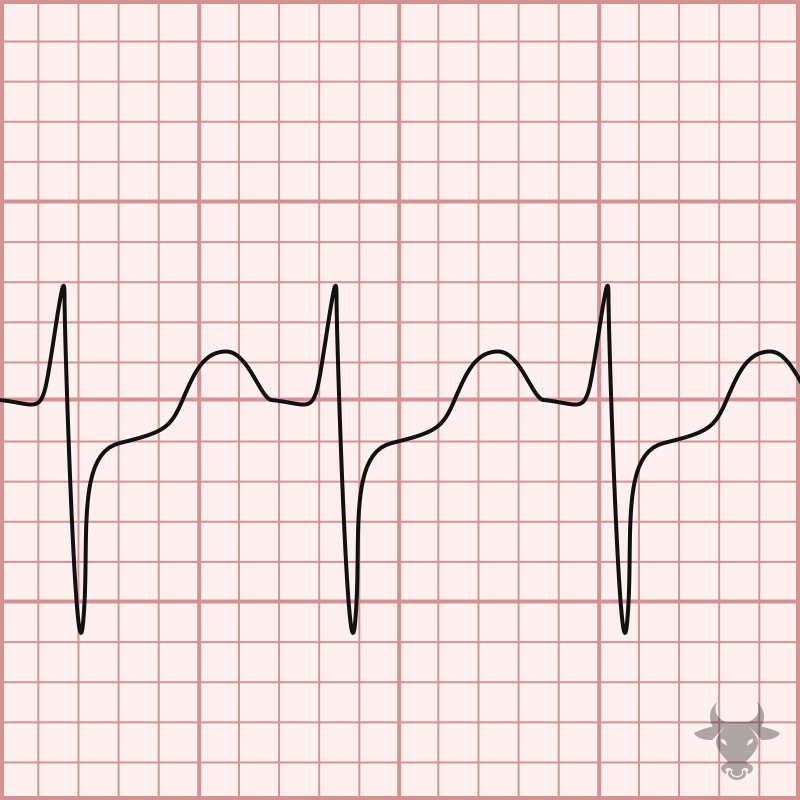
Examples
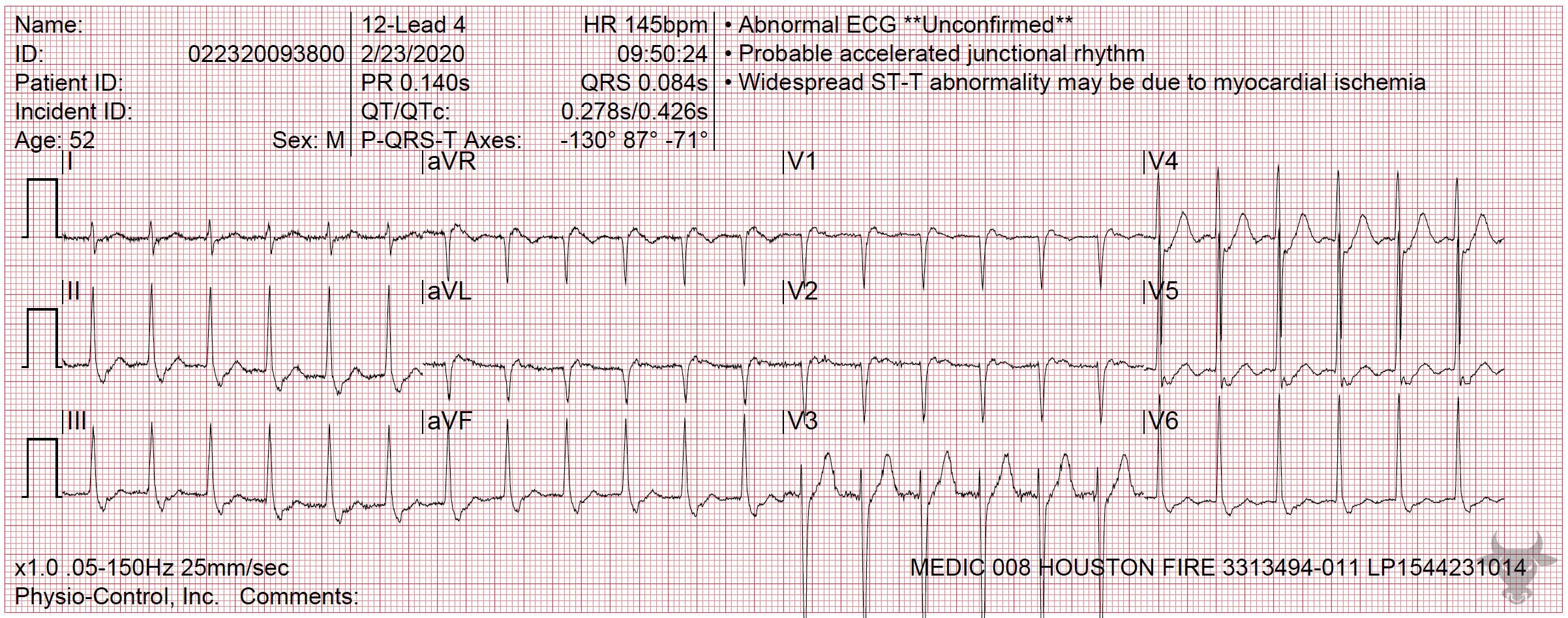
Atrioventricular Nodal Reentrant Tachycardia
Retrograde P waves are seen immediately following the QRS complexes in leads V1 and II, and appear like pseudo-R and pseudo-S waves, respectively.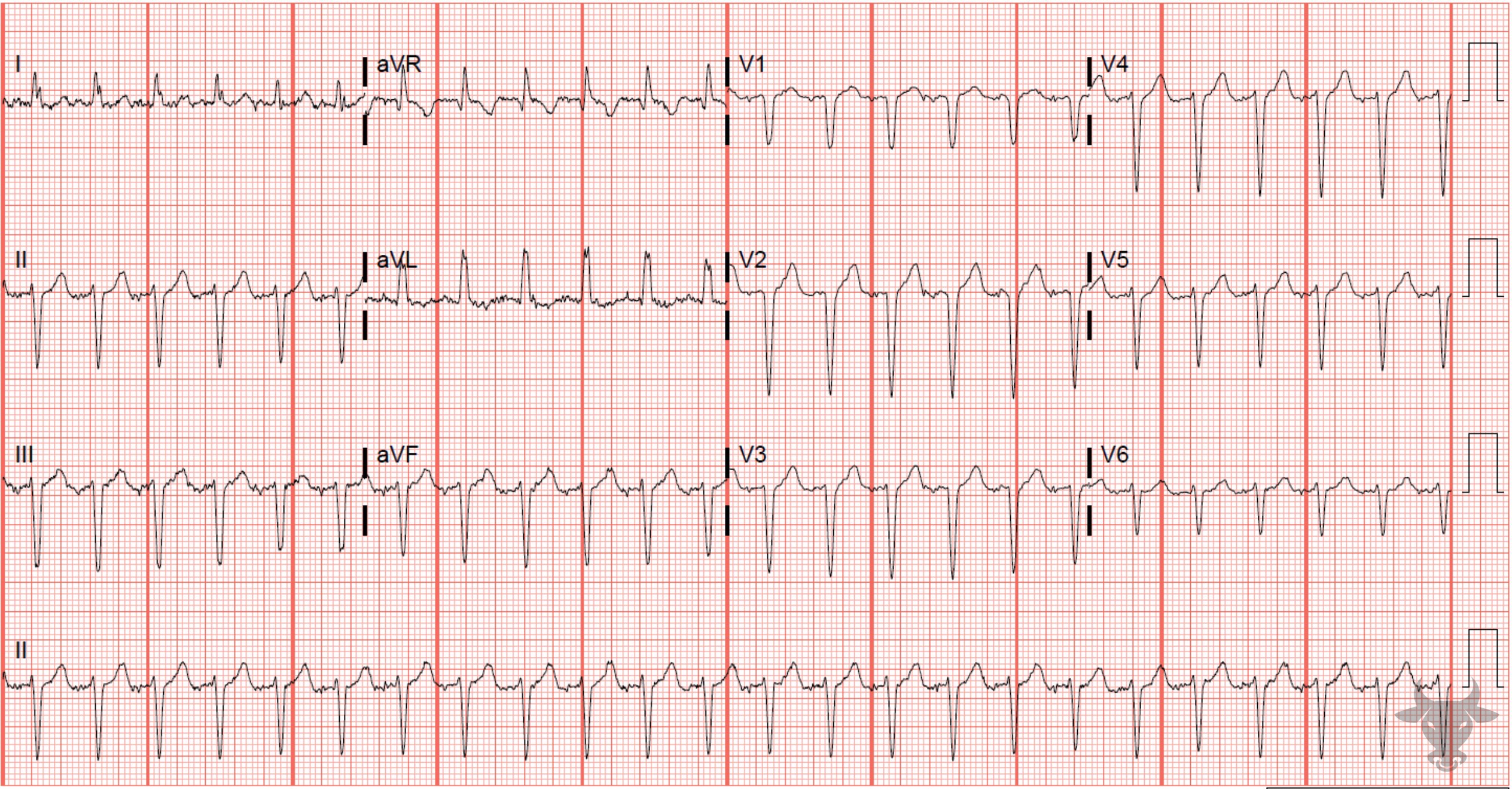
Atrioventricular Nodal Reentrant Tachycardia
Typical atrioventricular nodal reentrant tachycardia conducts down the slow pathway and up the fast pathway all within the node, and retrograde P waves can occasionally be seen immediately following the QRS complex. In atypical atrioventricular tachycardia, which conducts down the fast and up the slow pathway, retrograde atrial activity can occasionally be seen prior to or in-between QRS complexes as with this case. This patient converted with adenosine helping to confirm the diagnosis of atrioventricular tachycardia.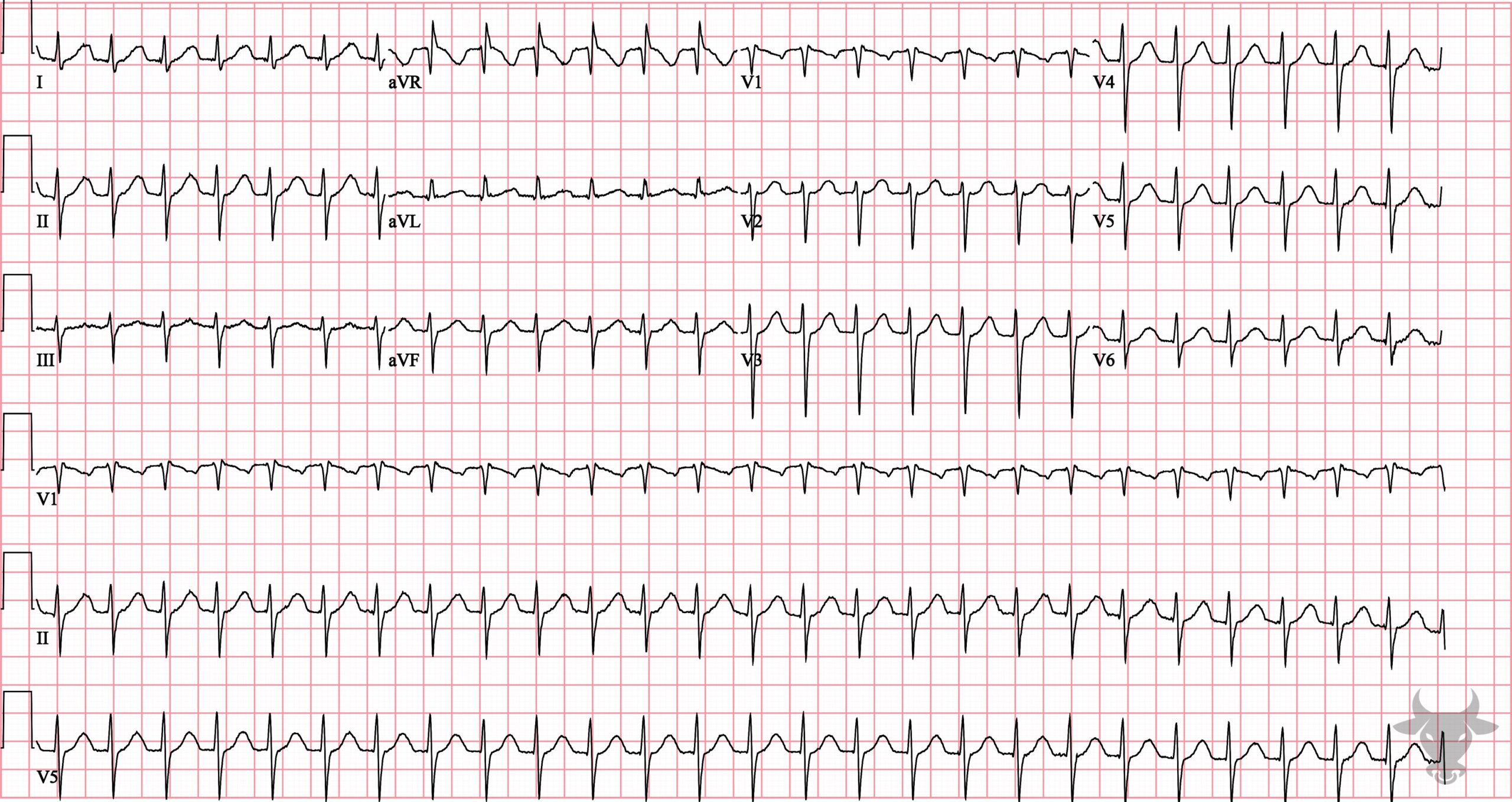
Atrioventricular Nodal Reentrant Tachycardia
Atrioventricular nodal reentrant tachycardia that converted with adenosine.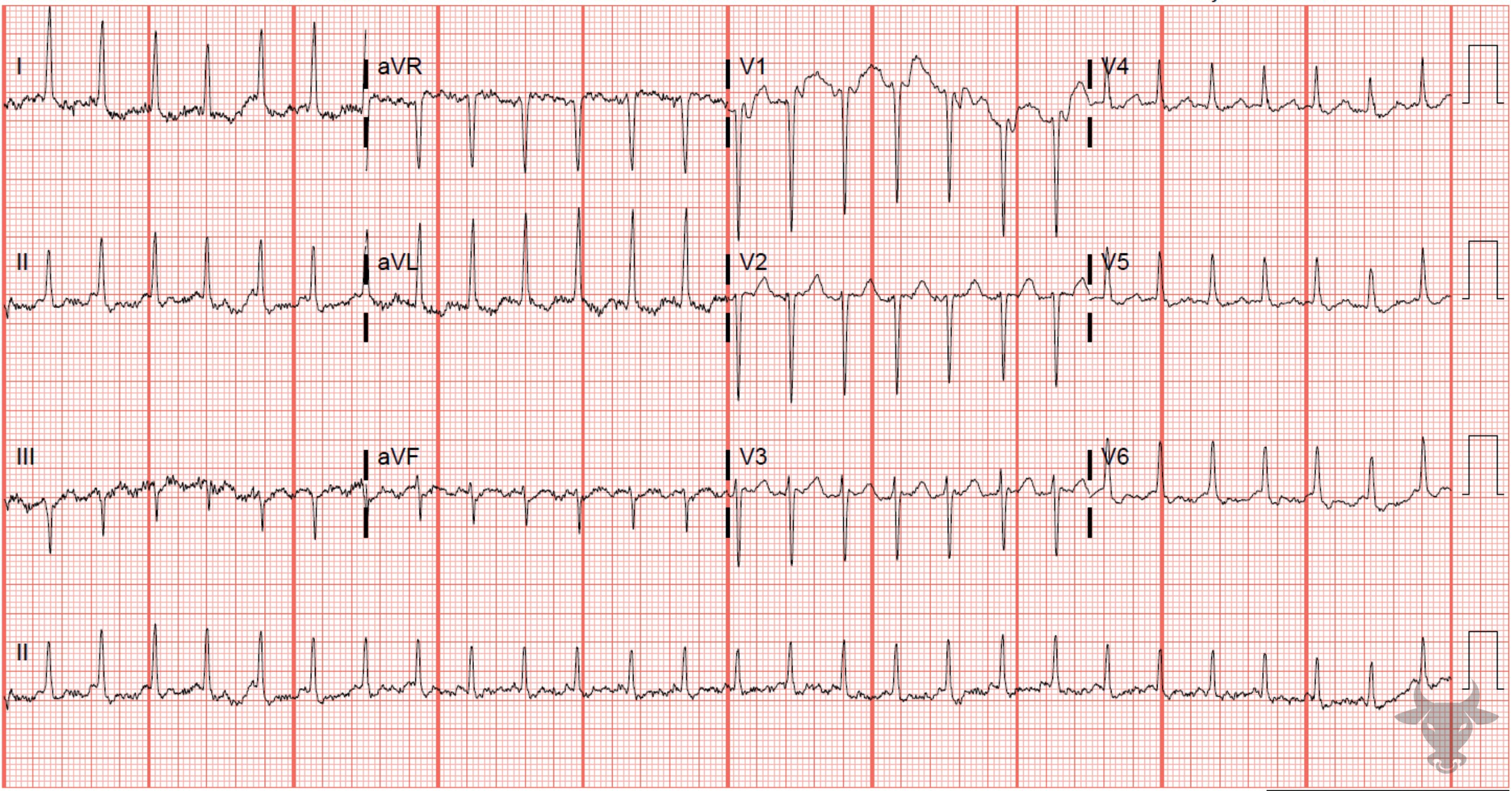
Atrial Flutter With 2:1 Conduction
A subsequent ECG was performed with the Lewis lead, which unmasked the underlying 2:1 conduction. The Lewis lead describe a different positioning of the limb leads in order to better visualize atrial activity.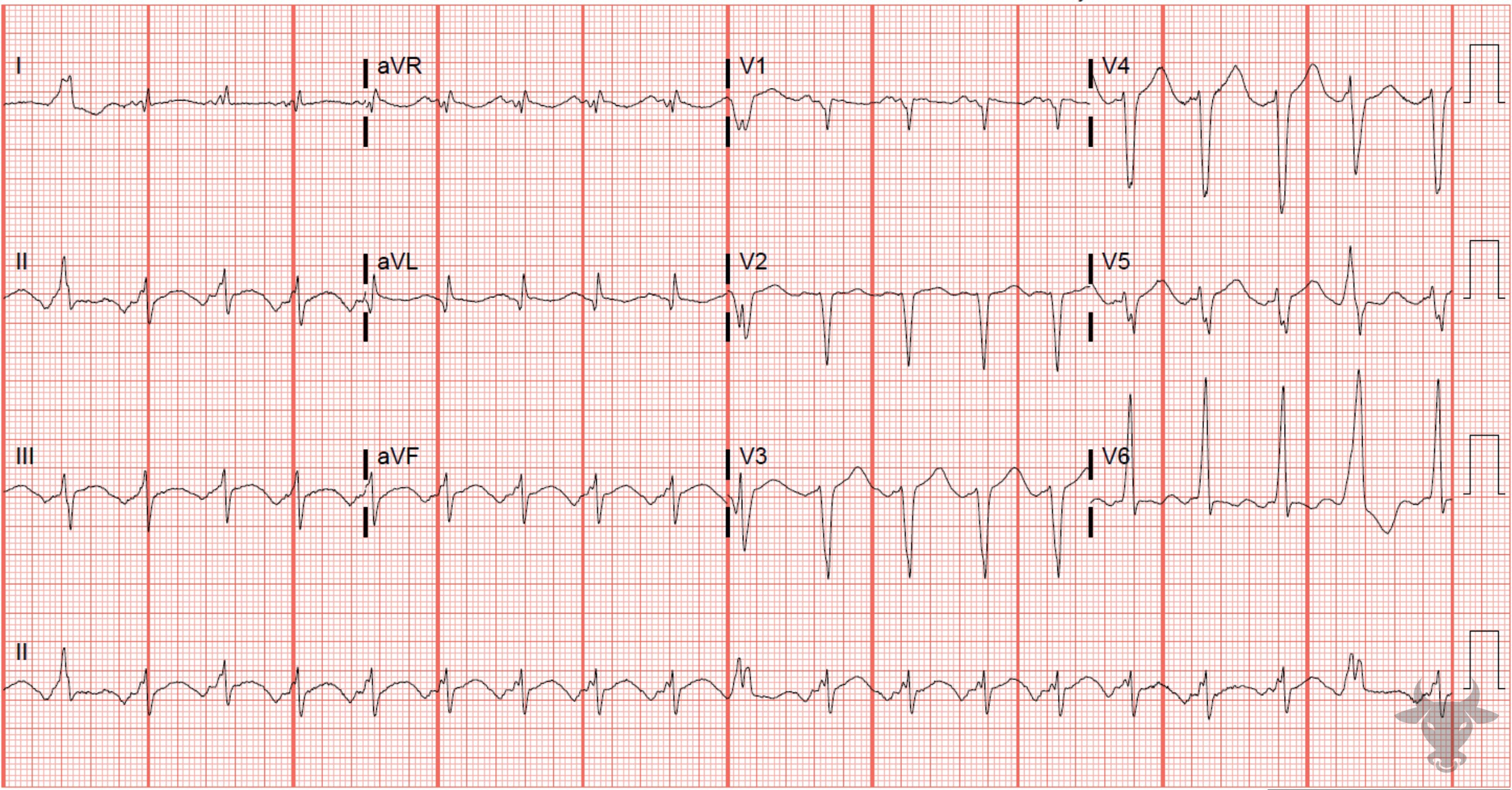
Atrial Tachycardia
The normal P wave axis is down in lead V1 and up in lead II. The abnormal P wave axis in this ECG reveals an ectopic atrial source.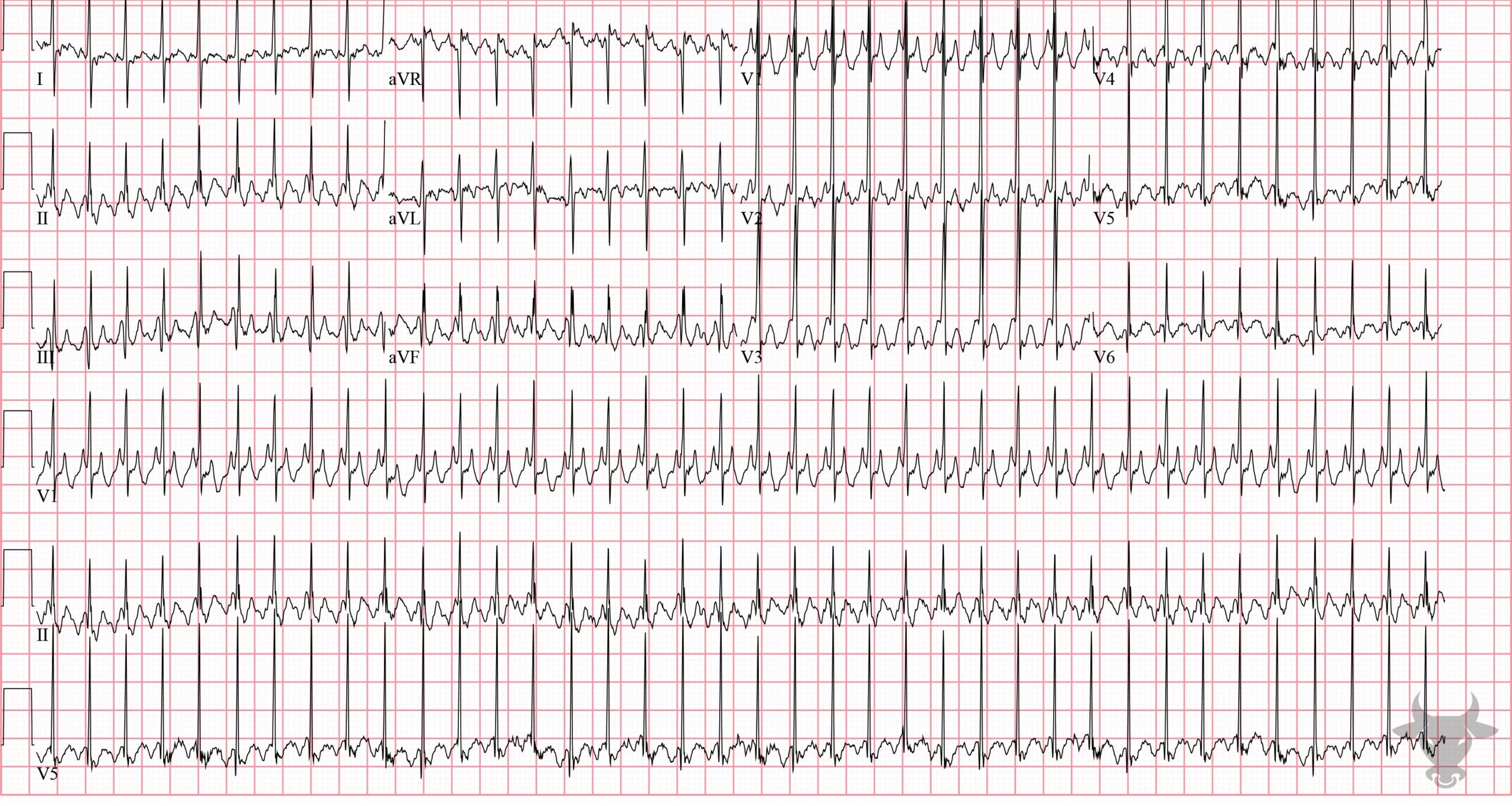
Atrial Flutter
2:1 atrial flutter in an infant.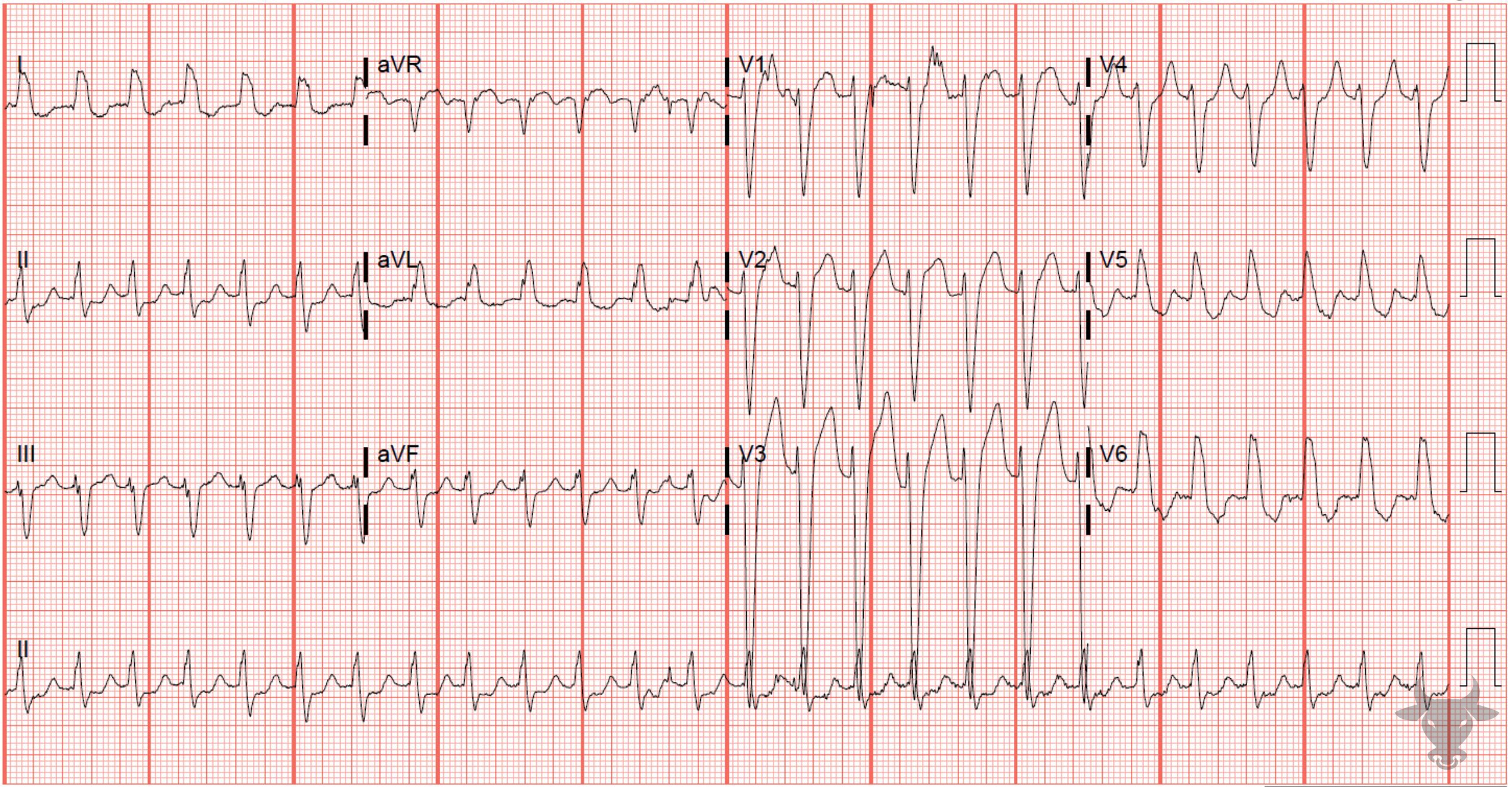
Supraventricular Tachycardia with Aberrancy
The wide complex seen here was exactly consistent with the patient's known left bundle branch block. This is one instance when supraventricular tachycardia with aberrancy can be reliably diagnosed. This patient was successfully converted with adenosine.References
- Wagner GS, Strauss DG. Marriott’s Practical Electrocardiography. 12th ed. Lippincott Williams & Wilkins; 2014.
- Link MS. Evaluation and Initial Treatment of Supraventricular Tachycardia. New England Journal of Medicine. 2012;367(15):1438-1448.
- Katritsis DG, Camm AJ. Atrioventricular nodal reentrant tachycardia. Circulation. 2010;122(8):831-840.
- Whinnett ZI, Sohaib SMA, Davies DW. Diagnosis and management of supraventricular tachycardia. Bmj. 2012;345(dec11 1):e7769-e7769.
